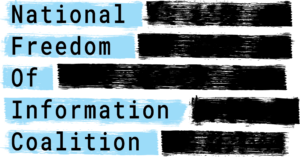
TC Palm by Lucas Daprile
August 30, 2017
CHANGING COURSE
TCPalm obtained hundreds of South Florida Water Management District emails, Outlook calendar meeting invitations and various other internal documents to shed light on a U.S. Sugar Corp. lobbyist’s influence over the agency’s water pollution rules.
Editor’s note: Key emails documenting TCPalm’s investigative findings are linked throughout the article and assembled at the bottom of this page.
South Florida water managers were on the verge of an agricultural pollution crackdown when they scrapped their plans and let a sugar lobbyist dictate edits to a 2015 annual report that paved the way for weaker regulations, emails show.
The South Florida Water Management District changed course immediately after a Dec. 3, 2014, meeting with U.S. Sugar Corp. lobbyist Irene Quincey, eventually halting its planned policy in favor of a plan that takes polluters at their word and holds no one accountable if water quality suffers.
The sugar lobbyist’s influence, which exceeded that of scientists, environmentalists and the general public, affected changes to rules meant to protect Florida waterways from pollutants that feed toxic algae blooms. Critics lament the district’s special treatment for special interests.
A 2007 state law tasked the district with writing regulations that would use landowners’ existing permits to enforce limits on how much algae-spurring nitrogen and phosphorus farms north, east and west of Lake Okeechobee could release from their properties.
The model was existing regulations for south of the lake, which have reduced phosphorus pollution in the Everglades, scientists say. The backbone would have been hard data that zeros in on the worst polluters and punishes them for noncompliance.
Instead, the sugar lobbyist’s edits helped align the district with the Department of Environmental Protection’s weaker Basin Management Action Plan (BMAP), which uses simulated computer models to assess the pollution cleanup progress of large areas. It doesn’t single out any one landowner or set enforceable pollution limits for farms.
TCPalm investigation: BMAP ignores water quality and dilutes accountability.
“The BMAP process, historically, has a reputation of not being enforced and therefore being not very effective,” former Florida Gov. Bob Graham told TCPalm.
U.S. Sugar and the district did not answer TCPalm’s questions about the issue.
. . . .
11th hour edits
The district staff was all but done writing its 2015 South Florida Environmental Report, an annual summary of its most recent scientific research and pollution cleanup plans, when Quincey stepped into the picture, emails show. That was five days before the staff’s Dec. 8 deadline to have the report completed for a final administrative review.
Over the next month, Quincey worked behind the scenes to edit three chapters of the annual report, emails show. There’s no evidence she had said anything about the new regulations publicly, either during the district’s board meetings nor the monthlong comment period that ended about seven weeks before she got involved.
Quincey communicated mostly by phone and in-person meetings. But in district emails, the staff references two of her key edits, among others . . . .
The 11th-hour edits caused confusion both within the district and at other state agencies, emails show.
. . . .
Priorities
Writing new pollution regulations ranked No. 8 on the district’s list of 40 goals for 2015.
In 2014, the agenda for the Dec. 11 board meeting said the district would start writing the new regulations, per the staff’s recommendation. And the district had created a list of 20 environmental and agricultural industry officials to notify of the agency’s plans.
But the district spiked the agenda item and scrubbed the email notification to stakeholders immediately after a Dec. 3 meeting with Quincey, emails show.
Before and during the public comment period, other agricultural interests had pushed for the same regulations Quincey did privately, but the district hadn’t acted on their input.
Quincey then presented on the topic during a Dec. 12 meeting of district staff and agricultural interests that included a “Southern style lunch” and skeet shooting.
Then-Deputy Administrator Len Lindahl brought a hard copy of Chapter 4 to that meeting and asked Quincey for a “list of edits,” emails show. It’s unclear whether the list was unsolicited or in response to someone’s request for her input. Lindahl declined to comment and the district refused to answer TCPalm’s questions.
After a Dec. 17 meeting with Quincey, the district also changed its legislative proposal to align with the weaker DEP regulations that U.S. Sugar was seeking.
“It’s just a casualty of a bigger process that was moving forward in the state of Florida,” said consultant Gary Goforth, a former district scientist and Kissimmee River restoration manager whose study was cut from the report. “They’re shifting from a very effective regulatory program that held landowners accountable on an annual basis to a program that relies on smoke and mirrors.”
Emails show no evidence district scientists had any concerns with the study. Nor did Walter Dodds, a Kansas State University professor of aquatic ecology, who did a routine peer review at the district’s request, before Quincey’s involvement. Dodds also told TCPalm in February he found “no major problems with the report.”
Open-government advocate Barbara Petersen, president of the Florida-based First Amendment Foundation, called the lobbyist’s interference “disturbing.”
“We’re assuming there is a certain scientific standard … Then they make substantive changes based on requests from a lobbyist,” she said. “Those changes are not peer-reviewed, which calls into question the standard by which these reports are put out.
“I think the whole thing stinks.” [READ MORE]
